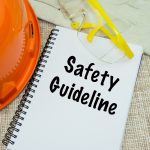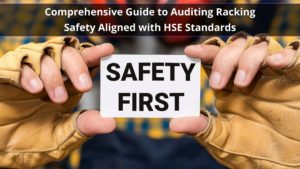
SEMA racking inspection guidelines are the gold standard of the racking safety industry.
Without SEMA racking inspection guidelines, guaranteeing the safety of any warehouse would be impossible. The advice laid down by SEMA is often echoed by HSE and — in some cases — it becomes law. So, what are the SEMA racking inspection guidelines?
SEMA Racking Inspection Guidelines: SEMA Codes of Practice
However, most SEMA racking inspection guidelines come in the form of SEMA Codes of Practice. These can be downloaded from the SEMA website for a fee, so it’s worth knowing which codes of practice you will need — if any at all!
The best way to do that is to read through HSE’s HSG76 Warehouse and storage: A guide to health and safety. HSE is the British government branch responsible for occupational health and safety. As such, theirs is the first and final word on any issue relating to warehouse safety.
In cases where this general guide on warehouse safety lacks details, it often refers to specific SEMA Codes of Practice. Using HSG76, you can then figure out which SEMA Code of Practice HSE is referring to specifically and search that particular code of SEMA racking inspection guidelines.
SEMA Racking Inspection Guidelines: Technical Bulletins
As well as SEMA Codes of Practice, SEMA also releases technical bulletins which act as supplements, updates, clarifications, or corrections. These bulletins are not mentioned in HSG76, but they contain some good advice nonetheless. What’s more, considering SEMA’s position in the industry, it’s advice worth following. SEMA’s full list of technical bulletins can found on its website.
SEMA Racking Inspection Guidelines: Training Courses
Designed for end users of storage systems and racking inspection professionals, SEMA offers a wide range of training courses. All of these contain various racking inspection guidelines from SEMA — as well as racking maintenance and racking installation guidelines.
This training is referenced by HSE in HSG76, so you know that the guidelines from this training are authoritative. Specifically, the guide refers to the Storage Equipment Installers Registration Scheme (SEIRS) and the SEMA Approved Racking Inspector (SARI) scheme.
SEMA Load Notices Become UK and EU Legislation
In one instance, SEMA guidelines became UK and EU law because of SEMA’s authority. This was the case with load notices.
SEMA created the first load notices back in the 1980s with the first SEMA Code of Practice for Use of Static Pallet Racking. However, because of the EU’s Directive 92/58/EEC, the legal requirements for signage in the UK would change in 1996 with the Health and Safety (Safety Signs and Signals) Regulations 1996.
Due to this, SEMA had to change its advice on load notices accordingly. Then, SEMA updated its stance on load notices again with the SEMA Load Notices Code 2004. The EU then developed EN 15635. This was inspired by the SEMA Load Notices Code 2004.
In short, the EU influenced SEMA’s stance on load notices and — in turn — SEMA influenced the EU’s stance on load notices. This relationship goes to show how important SEMA racking inspection guidelines are. Even though they are not the law, they can help to create the law in the long run and they are often referenced by lawmakers such as HSE and the EU.
If you want to learn more about the SEMA racking inspection guidelines from the SARI scheme, contact Storage Equipment Experts for racking inspection training from a SARI.





